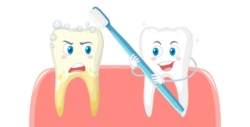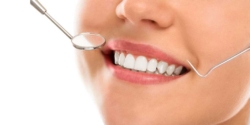A difference in your smile is one of the first noticeable signs of aging that could come up even as early as your 30s. As you age, many things start to change with your body, both inside and the outside. You start to notice your susceptibility to illnesses, and differences in your appearance, including wrinkling, sagging, and fine lines. There are means to manage the beauty of your smile, but changes are inevitable, including shifting teeth and weakened enamel and stains.
Highlights
Ways Your Smile Changes as You Age
As you grow older, many features that make your smile what it is will change, and it may look different from what you are used to. The changes include
Tooth discoloration
As you age, your teeth’ color gets duller. Your pearly whites take on a yellow color, and this is due to the enamel losing a few layers and becoming thinner. The tissue beneath the enamel is the yellowish dentin, responsible for your teeth’ new look.
Malocclusion
Malocclusion is a bite disorder characterized by the inability of your upper and lower teeth to align. It is usually a result of crowded and crooked teeth. You could suffer from tooth decay because of the difficulty of taking care of plaque in crooked teeth, wearing down of the teeth, and TMJ pain. If this bite problem isn’t addressed early in orthodontic treatments, it will only worsen as you age.
Crowding
As one grows older, they lose volume in their jaw, causing its shrinkage. It means less room for the person’s teeth, and they start to crowd. It also gives the face a saggy appearance.
Diastema
Diastema is the space between a person’s two front teeth, and while it is not a condition that is harmful to a person’s health, some people don’t find it aesthetic. As you grow older, several changes that may crop up in your smile might be responsible for diastema. They include asymmetrical jaws, crowded teeth, and receding gums.
Teeth shifting
Our teeth constantly move because they aren’t rooted in bones but in periodontal ligaments. Even if you use orthodontic devices such as braces to get them in the desired position, shifting begins again once you stop keeping them in check with a retainer.
Altered shape and length
As a result of the several years of chewing and maybe teeth grinding, the teeth are bound to get worn down. Gum recession isn’t an age-bound condition but is more common in older people. This contributes to giving the teeth a rather short and altered appearance. Contrastingly, if a person suffers from gum recession, their teeth look extended and less attractive because more of them are exposed.
Factors Responsible for the Changes in Smile
Several factors are the cause behind the changes in your smile. From the habits to the overlooked dental problems, if not addressed adequately, they metastasize and affect your smile.
Wear and tear
Years of eating acidic foods, biting, chewing, and grinding will eventually tell on the teeth and weaken the enamel.
Dry mouth
Dry mouth can be responsible for dental caries or periodontitis, which affects a person’s smile. Dry mouth is a condition more prevalent in older people. It could result from certain medications for high blood pressure and illnesses.
Receding gums
Receding gums is another reason for the alteration to a person’s smile as they age. This condition reveals parts of the teeth previously covered by the gum, making their smile less attractive and causing hypersensitivity. Diabetes may be a trigger of this condition.
Gum disease
If you suffer from gum disease and don’t address it swiftly, it could lead to tooth loss which translates to a loss of bone mass. This can alter the structure of your face and smile.
Collagen loss
Collagen is a protein that sponsors the skin’s flexibility. As you grow older, your level of collagen production drops, which causes the skin to lose its firmness. However, loss of collagen has more effect on your appearance as it also affects your smile because it can lead to the narrowness of a person’s dental arches, causing teeth crowding.
Maintain proper oral hygiene
Proper oral hygiene is the primary way to reduce shocking and not pleasing changes to your smile. Ensure to take good care of your oral health by brushing, flossing, gargling with a mouthwash, and watching what goes into your mouth. You should also eat nutritious foods to cleanse and strengthen your smile and immune system.
Visit your dentist
Paying frequent visits to your dentist cannot be emphasized enough. Going for routine checkups and dental cleaning twice a year can do a lot in preserving your smile. You can eliminate plaque that could lead to deterioration and address signs of oral diseases like periodontitis.
Also, visit an orthodontist.
Suppose you have bite issues, crooked and crowded teeth, or suffer from dental irregularities requiring orthodontic devices such as braces and Invisalign. In that case, you should visit an orthodontist early. If you do not try to fix such irregularities early, they can worsen as you age. If you find braces embarrassing, you can try the Invisalign treatment. Also, when you finish the treatment, you have a lifetime commitment to your retainers. They will help maintain the results of the treatment.
Address your bad dental habits
Whether it is smoking, drinking wine after every meal without brushing, or grinding your teeth, you should address any habit that could be detrimental to your oral health. For grinding your teeth, your dentist could get you a bite guard to reduce the effects on your teeth.
- Explore teeth-whitening options
- Consider dental implants
- Dental makeover? Try veneers
- Cosmetic bonding
- Get composite or porcelain fillings
Conclusion
As we age, changes in our bodies and smiles are inevitable, but we have the power to reduce the effects of the change. You can still look very good at old age; you’ll do just fine between regular dental visits, proper oral care, and dental treatments.







